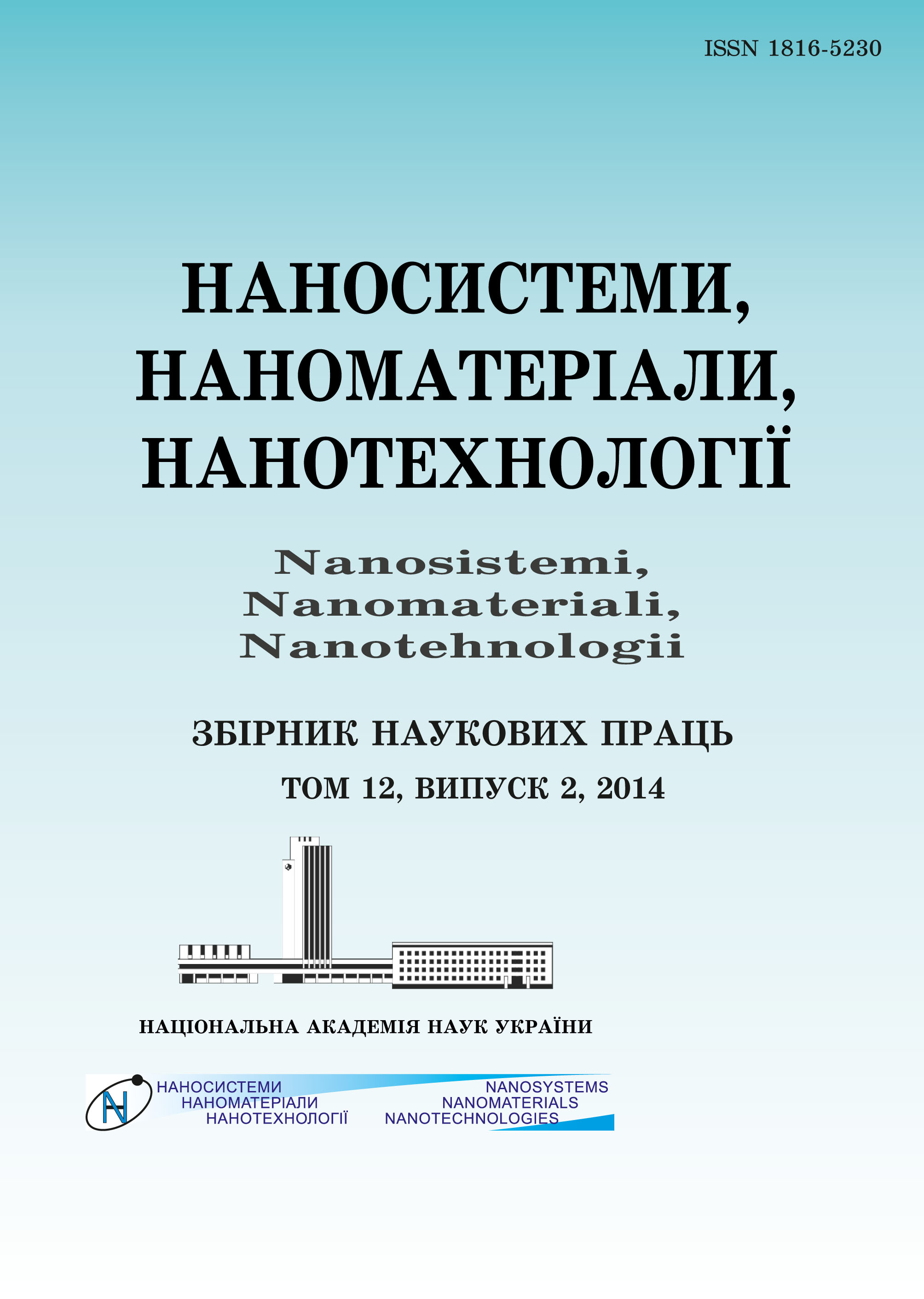|
|
|||||||||

|
Year 2024 Volume 22, Issue 3 |
|
|||||||
|
|||||||||
Issues/2024/vol. 22 /issue 3 |
|
ISRAA AKRAM ABBAS, AMEERA J. KADHM, and
RAHEEM LAFTA ALI
Study of the Effect of Li Doping on ZnO Films
Using RF-Magnetron Sputtering Method at Low Temperature
623–636 (2024)
PACS numbers: 73.61.-r, 77.22.Ch, 77.22.Gm, 78.66.Li, 78.67.Sc, 81.15.Cd, 81.40.Tv
In this study, we investigate the effect of Li-doping concentrations (3, 6, and 9%) on the optical and electrical properties of Li-doped ZnO-containing films. Li-doped ZnO films are fabricated by the RF-magnetron sputtering process. The optical and electrical properties of thin-film deposition at different sputtering RF powers in the plasma chamber are investigated. The electrical and optical properties of the thin layer are studied. The results for the optical properties of thin films (ZnO/Li) show that the absorbance, absorption coefficient, and optical conductivity increase with increasing Li concentration, while the energy band gap and transmittance decrease with increasing Li concentration. For all tested temperatures, the D.C. conductivity of the ZnO film increases after Li doping. The D.C. test shows that all films have the same activation energy, and the value of this energy increases as the Li-doping ratio increases. The electrical properties of alternating current demonstrate that, as the frequency of the electric field increases, the dielectric constant and dielectric loss of all films decrease
KEY WORDS: ZnO films, RF-magnetron sputtering method, Li doping, nanocomposite, optical and electrical properties
DOI: https://doi.org/10.15407/nnn.22.03.623
REFERENCES
- J. Wang, H. Pan, X. Xu, H. Jin, W. Ma, S. Xiong, Q. Bao, Z. Tang, and Z. Ma, ACS Appl. Mater. Interface, 14, No. 10: 12450 (2022); https://doi.org/10.1021/acsami.1c22093
- E. Cheng, S. Huang, D. Chen, R. Huang, Q. Wang, Z. Hu, Y. Jiang, Z. Li, B. Zhao, and Z. Chen, Acta Crystallogr. C: Struct. Chem., 75, No. 7: 969 (2019); https://doi.org/10.1107/S2053229619008222
- P. Bhat and S. K. Naveen Kumar, J. Mater. Sci.: Mater. in Elect., 33, No. 3: 1529 (2022); https://doi.org/10.1007/s10854-021-07664-x
- K. Singh, H. Kaur, P.K. Sharma, G. Singh, and J. Singh, Chemosphere, 313: 137322 (2023); https://doi.org/10.1016/j.chemosphere.2022.137322
- G. Voicu, D. Miu, C. D. Ghitulica, S. I. Jinga, A. I. Nicoara, C. Busuioc, and A. M. Holban, Ceram. Int., 46, No. 3: 3904 (2020); https://doi.org/10.1016/j.ceramint.2019.10.118
- X. Zhao, K. Nagashima, G. Zhang, T. Hosomi, H. Yoshida, Y. Akihiro, M. Kanai, W. Mizukami, Z. Zhu, T. Takahashi, and M. Suzuki, Nano Lett., 20, No. 1: 599 (2019); https://doi.org/10.1021/acs.nanolett.9b04367
- L. Tang, Y. Jia, Z. Zhu, Y. Hua, J. Wu, Z. Zou, and Y. Zhou, Molecules, 27, No. 3: 833 (2022); https://doi.org/10.3390%2Fmolecules27030833
- M. Kwoka, E. Comini, D. Zappa, and J. Szuber, Nanomaterials, 12, No. 15: 2666 (2022); https://doi.org/10.3390%2Fnano12152666
- X. Zhan, F. Gao, Q. Zhuang, Y. Zhang, and J. Dang, ACS Omega, 7, No. 10: 8960 (2022); https://doi.org/10.1021%2Facsomega.1c07370
- S. Nandi, S. Kumar, and A. Misra, Mater. Adv., 2, No. 21: 6768 (2021); https://doi.org/10.1039/D1MA00670C
- L. Fan, T. Xiao, C. Zhong, J. Wang, J. Chen, X. Wang, L. Peng, and W. Wu, Cryst. Eng. Comm., 21, No. 8: 1288 (2019); https://doi.org/10.1039/c8ce01886c
- S. Y. Tsai, M. H. Hon, and Y. M. Lu, J. Cryst. Growth, 326, No. 1: 85 (2011); https://doi.org/10.1016/j.jcrysgro.2011.01.058
- S. Ghosh, G. G. Khan, A. Ghosh, S. Varma, and K. Mandal, Cryst. Eng. Comm., 15, No. 38: 7748 (2013); https://doi.org/10.1039/c3ce40717a
- Z. Zhang, K. E. Knutsen, T. Merz, A. Y. Kuznetsov, B. G. Svensson, and L. J. Brillson, J. Phys. D: Appl. Phys., 45, No. 37: 375301 (2012); https://doi.org/10.1088/0022-3727/45/37/375301
- S. Yu, L. Ding, H. Zheng, C. Xue, L. Chen, and W. Zhang, Thin Solid Films, 540: 146 (2013); https://doi.org/10.1016/j.tsf.2013.05.125
- M. Rahman, M. Kamruzzaman, J. A. Zapien, R. Afrose, T. K. Anam, M. N. Liton, M. A. Helal, and M. K. Khan, Mater. Today Commun., 33: 104278 (2022); https://doi.org/10.1016/j.mtcomm.2022.104278
- K.-H. Wu, L.-Y. Peng, M. Januar, K.-C. Chiu, and K.-C. Liu, Thin Solid Films, 570: 417 (2014); https://doi.org/10.1016/j.tsf.2014.03.062
- D. Wang, J. Zhou, and G. Liu, J. Alloys Compd., 481, Nos. 1–2: 802 (2009); https://doi.org/10.1016/j.jallcom.2009.03.111
- T. T. Wang, M. M. Dai, Y. J. Yan, H. Zhang, and Y. M. Yu, Appl. Mech. Mater., 734: 796 (2015); https://doi.org/10.4028/www.scientific.net/AMM.734.796
 This article is licensed under the Creative Commons Attribution-NoDerivatives 4.0 International License ©2003—2024 NANOSISTEMI, NANOMATERIALI, NANOTEHNOLOGII G. V. Kurdyumov Institute for Metal Physics of the National Academy of Sciences of Ukraine. E-mail: tatar@imp.kiev.ua Phones and address of the editorial office About the collection User agreement |